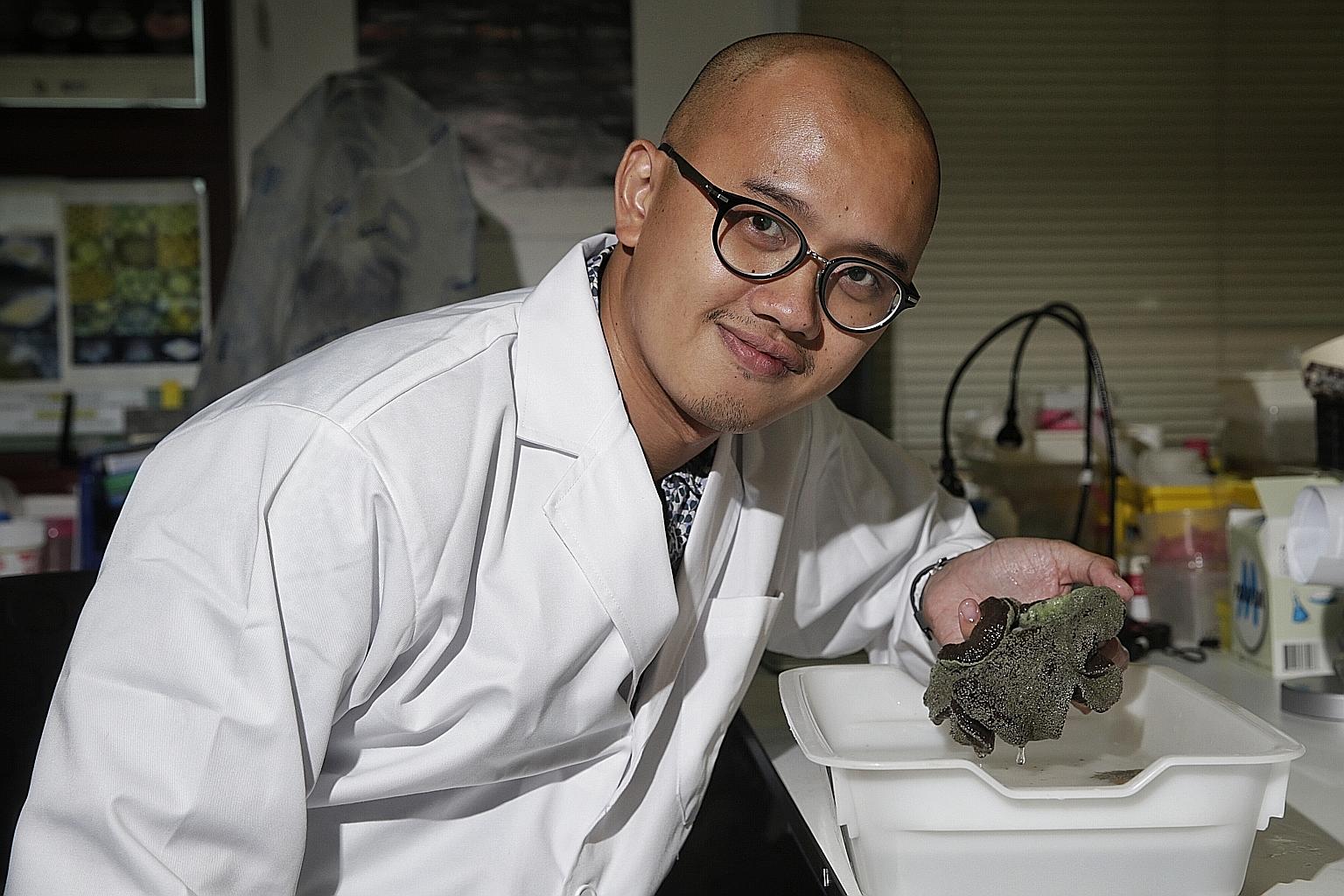Learning more about an enigmatic creature
A $25 million, five-year national programme dedicated to marine science research has been launched by National Research Foundation in collaboration with National University of Singapore. Audrey Tan reports on some marine science research in Singapore and why it is important.
Sign up now: Get ST's newsletters delivered to your inbox

Mr Yap holding a carpet anemone. He is working on setting up a baseline of sea anemones in Singapore by documenting them.
ST PHOTO: KEVIN LIM
Follow topic:
Corals have earned widespread attention for their beauty and important role in the marine ecosystem, but little is known about their cousins, the sea anemones.
Graduate student Nicholas Yap is on a mission to change that with his research.
The 32-year-old is working on setting up a baseline of sea anemones in Singapore, by identifying and documenting the flimsy creatures often seen jiving and jamming to underwater currents.
"They are quite common in Singapore but, more often than not, we don't know what they are," said Mr Yap, the only sea anemone researcher in Singapore.
The National Geographic puts the number of sea anemone species found in the world's oceans at more than 1,000. But in Singapore, only 27 species have been successfully identified, Mr Yap said.
One of the latest discoveries is a warty sea anemone found burrowing in the mudflats of Lim Chu Kang mangroves in 2012. Scientists have nicknamed it Bill because it does not match the identity of any known sea anemones, and so may be new to science.
"They form many symbiotic relationships with algae and different animals, yet we don't know about their role in the ecosystem, and how they contribute to it," said Mr Yap.
Like their coral cousins, sea anemones have algae living in them which, in turn, provide the anemone with nourishment.
Similarly, they also bleach - or expel this algae - when stressed. But how bleached anemones impact the ecosystem is not well understood.
Considering their abundance in marine habitats, understanding how they contribute to the ecosystem is important as it will help with decisions on marine conservation, said Mr Yap.
As veteran marine biologist Chou Loke Ming from the NUS' Tropical Marine Science Institute put it: "Every species has a role in the environment in its interaction with other species and the environment.
"If we don't know where they fit into the ecological puzzle, then we risk throwing them out of the equation we are trying to solve."
The study of these creatures could also have an impact on the medical sector, said Mr Yap. "Anemones have venom-containing stingers which could be extracted to do medical research and may pave the way for the discovery of a new drug."
Similarly, biodiversity research done as part of a new $25 million marine science research and development programme could yield new organisms for novel research and the discovery of valuable materials. The five-year programme was announced yesterday by the National Research Foundaton (NRF) and NUS.
NRF's director of programmes George Loh said: "Singapore is strategically located at the intersection of the Pacific Ocean and the Indian Ocean, and is within the Coral Triangle. This creates uniquely rich marine biodiversity off Singapore that is not well understood, and presents unprecedented opportunities to study our complex marine ecosystem and its many organisms."

